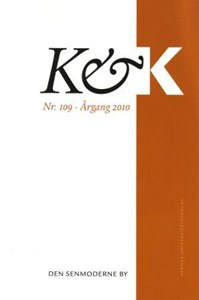HAVNEN OG DET HETEROGENE BYRUM - NORDHAVN BETRAGTET GENNEM GEORGES BATAILLES HETEROLOGI
DOI:
https://doi.org/10.7146/kok.v38i109.15793Nøgleord:
harbour, urban, Bataille, heterogeneousResumé
THE HARBOUR AND THE HETEROGENEOUS URBAN. NORDHAVN READ ON THE BASIS OF BATAILLES HETEROLOGY
This article deals with the revitalisation of post-industrial waterfronts on the basis of the French philosopher Georges Bataille’s concept of the heterogeneous. Using the northern harbour area in Copenhagen (Nordhavn) as its analysis site, the article investigates the way in which a heterologically based position can be introduced into urban space-making, pointing to a different urban ideal and the possibility of including something formless and wholly other in the conventional development process. Based on Bataille’s heterology, Nordhavn can predominantly be considered a radically different urban space on a spatial, reflexive and socio-cultural level. The harbour area can be characterised on the basis of four spatial types (ruin, shed, accumulation monument and terrain vague), each expressing a
heterogeneous aesthetic identity as something more or less excluded, non-ideal, and entropy- and waste-like. The heterogeneous typology thus establishes the experience of a progressive spatial formlessness, as well as emphasising the aesthetic and cultural potential in urban wastelands. In this sense, the heterogeneous urban environment underlines the importance of the procedural, non-planned, unexpected, other and hybrid in relation to the current discussions about how to create a vibrant urban space. In the age of gentrification, wall-to-wall city design and homogenised waterfronts, a heterogeneously inspired urban
development may thus generate an alternative aesthetic strategy leading towards a more value-pluralistic city.
Downloads
Publiceret
Citation/Eksport
Nummer
Sektion
Licens
Tidsskriftet følger dansk ophavsret.





